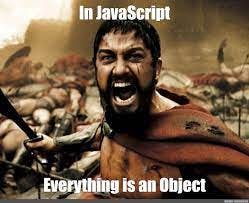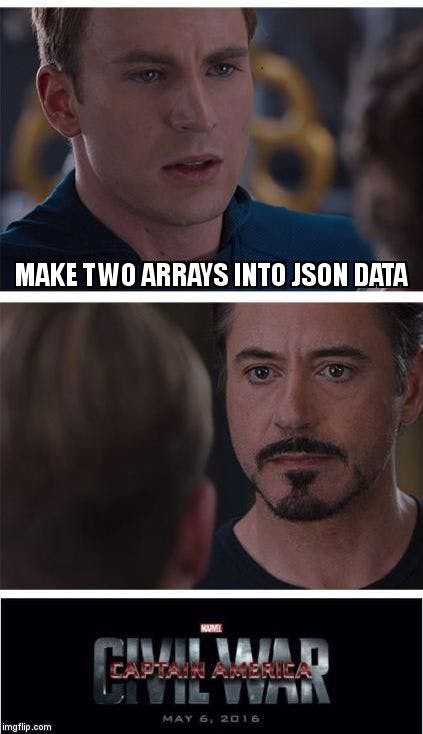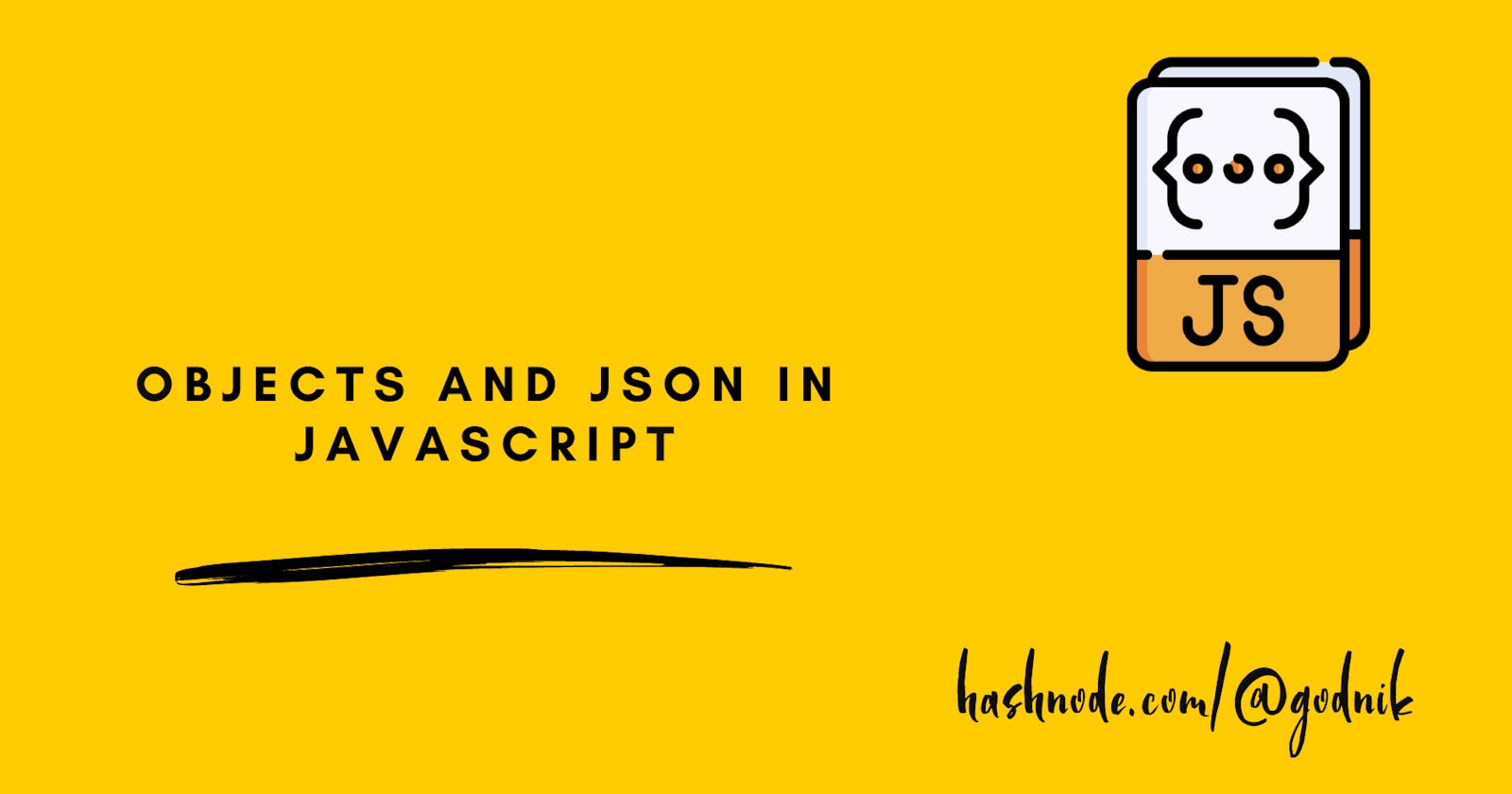Objects & JSON in Javascript
Objects are like the avocado of JavaScript - they make everything better
Introduction
JavaScript is a popular programming language that's widely used in web development. As a beginner in JavaScript, you may have come across the terms objects and JSON several times. You might have even wondered, "What are these things, and why do I need to know about them?"
Well, worry no more, because in this blog post, we'll discuss objects and JSON in a fun and easy-to-understand way. We'll also provide some code snippets to help you get a better grasp of these concepts.
In this blog post, we'll explore objects and JSON in JavaScript, and show you how to use them in your own projects.
Objects
What are Objects in JavaScript?
In JavaScript, an object is a collection of properties. Properties are simply key-value pairs, where the key is a string, and the value can be of any type, including another object. Everything can be an object and objects do have properties and properties have values, so an object is a key-value pair. Ah, that's too many heavy words lets make it easy for my peeps reading it out, so objects are like the superhero of JavaScript - they swoop in, save the day, and organize your data like a boss. Objects are like the pizza delivery of data - you can customize them to your liking, and they always arrive hot and fresh!" Let us try to understand it using the snippet:
const car = {
make: 'Honda',
model: 'Civic',
year: 2023,
color: 'black'
};
In this example, car is an object that has four properties: make, model, year, and color. The values of these properties are 'Honda', 'Civic', 2023, and 'black', respectively.
So this is how we create an object in Javascript.
Accessing Object Properties
Accessing objects is like unlocking a treasure chest of data - just remember your key (the object property).To access the properties of an object, you can use either dot notation or bracket notation. Here's an example using dot notation:
console.log(car.make); // Output: Honda
In this example, car.make returns the value of the make property, which is 'Honda'.
Ah this reminds you of something yes in Javascript everything is an object like in console.log console is the object and log is a method of the object console. Same goes for the math methods we learned in our first javascript blog.

Here's an example using bracket notation:
console.log(car['model']); // Output: Civic
In this example, car['model'] returns the value of the model property, which is 'Civic'.
Objects with Constructor Functions
You can also create objects using constructor functions. A constructor function is a function that creates an object. Here's an example:
function Car(make, model, year, color) {
this.make = make;
this.model = model;
this.year = year;
this.color = color;
}
const car1 = new Car('Honda', 'Civic', 2022, 'black');
console.log(car1.make); // Output: Honda
In this example, we've created a constructor function called Car. This function takes four parameters: make, model, year, and color. Inside the function, we use the this keyword to assign the values of the parameters to the object's properties.
We then create a new object using the new keyword and the Car constructor function. Finally, we use dot notation to access the make property of the car1 object.
JSON
JSON (JavaScript Object Notation) is a lightweight data format that's commonly used for transmitting data between a server and a web application. JSON is easy to read and write and is supported by almost all programming languages, including JavaScript. "It is like the magic wand of data formats - it makes data easy to read and write, and you don't need a degree in rocket science to use it. JSON is like the online shopping cart of data - just add your items and checkout, it's that simple!"
JSON uses a syntax that's similar to JavaScript objects. Here's an example of a JSON object:
{
"name": "John",
"age": 30,
"city": "New York"
}
In this example, we've created a JSON object with three properties: name, age, and city. The syntax is similar to JavaScript objects, but with a few key differences:
Property names must be enclosed in double quotes
Strings must be enclosed in double quotes
JSON does not support functions or undefined values
Converting Objects to JSON
You can convert JavaScript objects to JSON using the JSON.stringify() method. Here's an example:
const person = {
name: "John",
age: 30,
city: "New York"
};
const personJSON = JSON.stringify(person);
console.log(personJSON); // Output: {"name":"John","age":30,"city":"New York"}
In this example, we've created a JavaScript object called person. We then use the JSON.stringify() method to convert the object to a JSON string, which we store in the personJSON variable.
The resulting JSON string is the same as the JSON object we showed earlier.
Converting JSON to Objects
You can convert JSON strings to JavaScript objects using the JSON.parse() method. Here's an example:
const personJSON = '{"name":"John","age":30,"city":"New York"}';
const person = JSON.parse(personJSON);
console.log(person.name); // Output: John
In this example, we've created a JSON string called personJSON, which contains the same data as the person object we showed earlier. We then use the JSON.parse() method to convert the JSON string to a JavaScript object, which we store in the person variable.
The resulting person object is the same as the JavaScript object we created earlier.
Working with Complex Objects and JSON
Objects and JSON can be used to store and transmit complex data structures. Here's an example of a more complex JavaScript object:
const car = {
make: "Tesla",
model: "Model S",
year: 2021,
features: ["Autopilot", "Ludicrous Mode"],
owner: {
name: "John",
age: 30,
city: "New York"
}
};
const carJSON = JSON.stringify(car);
console.log(carJSON);
In this example, we've created a JavaScript object called car, which has several properties, including an array (features) and another object (owner). We then use the JSON.stringify() method to convert the object to a JSON string, which we store in the carJSON variable.
The resulting JSON string contains all the data from the car object, including the nested object and array.
Well I have something more about json.

JSON and APIs
As we mentioned earlier, JSON is often used for transmitting data between a server and a web application. This is commonly done through APIs (Application Programming Interfaces).
An API is a set of protocols and standards for building software applications. APIs allow different software applications to communicate with each other.
JSON and APIs are like a match made in heaven they're like the peanut butter and jelly of web development. With JSON, your data is like a well-behaved kid, and APIs are like the cool parent that lets them go out and play with other applications.
Many APIs return data in JSON format. For example, here's an API that returns information about the weather in New York:
https://api.openweathermap.org/data/2.5/weather?q=New%20York&appid=YOUR_API_KEY
If you visit this URL in your web browser, you'll see a JSON object with information about the weather in New York.
You can use JavaScript to fetch data from APIs and then parse the JSON data to display it on your web page.
Conclusion
Objects and JSON are powerful tools that allow you to work with data in JavaScript. Objects are collections of key-value pairs, while JSON is a lightweight data format that's easy to read and write. You can use JavaScript methods like JSON.stringify() and JSON.parse() to convert between objects and JSON, allowing you to transmit and store data in various formats.
In conclusion, working with objects and JSON in JavaScript can be as easy as baking a cake just follow the recipe and enjoy the delicious results. With a little bit of practice, you'll be navigating through data structures like a pro and impressing all your coding friends. And always remember, just like a good joke, programming can always use a little humor to lighten things up!!!!
Let's Connect
If you enjoyed this post and would like to stay updated on my work, feel free to connect with me on social media
If you find my blog helpful you all can always support me by sponsoring me!
